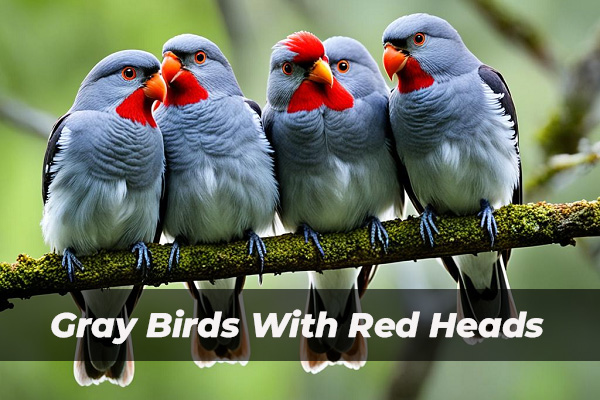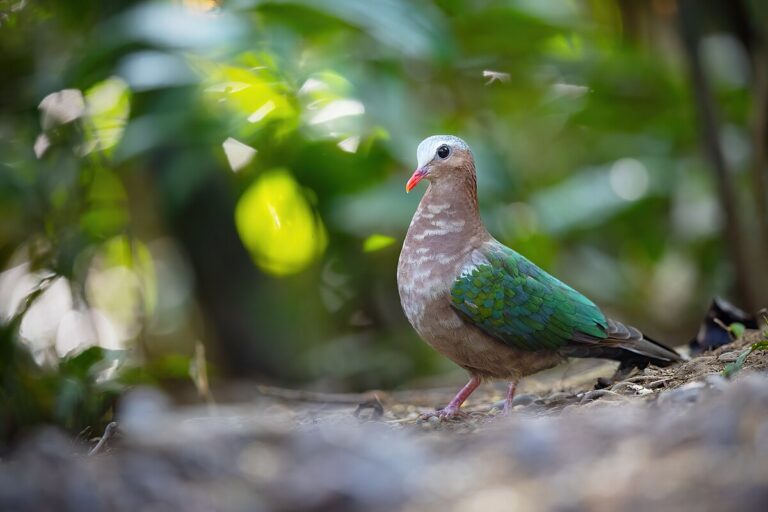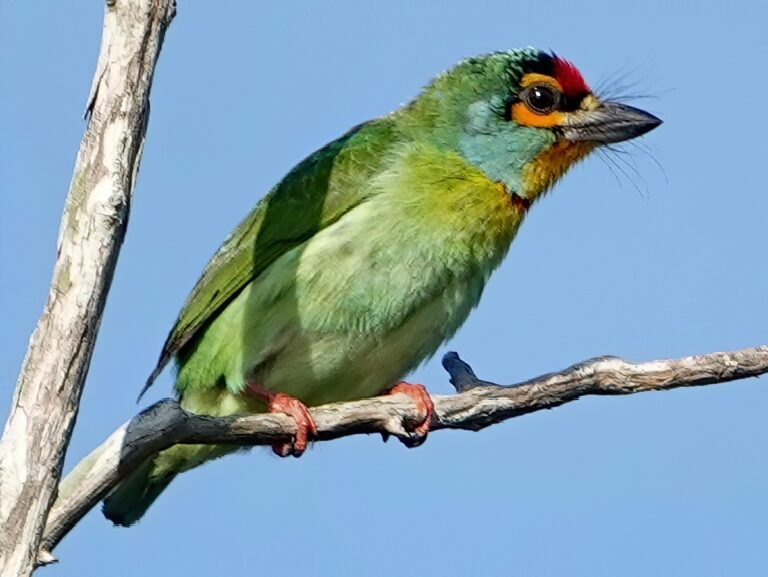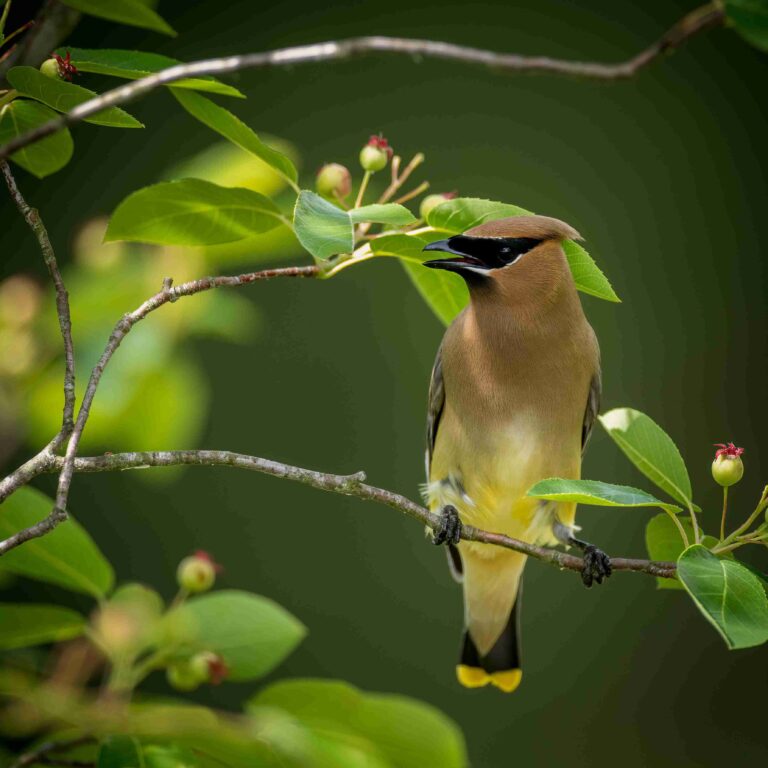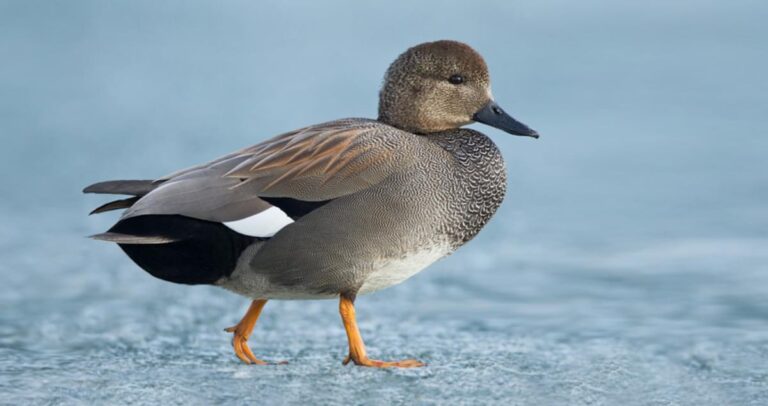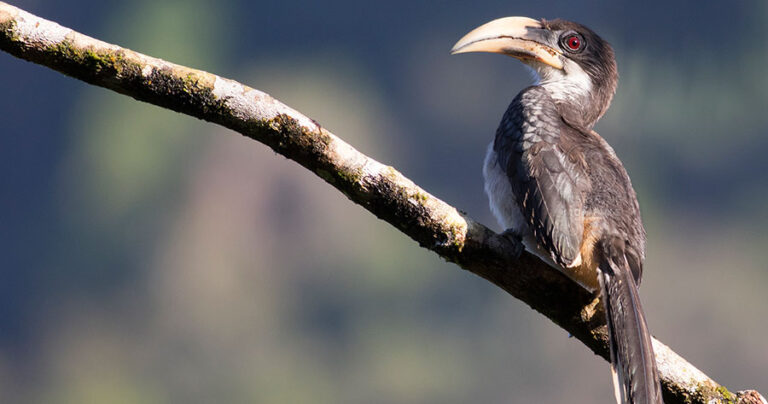Top 7 Gray Birds With Red Heads (With Photos)
Have you ever seen a bird that stands out? For those who love birds and nature, Gray Birds With Red Heads are an exciting sight. What is special about these birds that makes them so interesting? Let’s discover the top seven gray birds with redheads and learn about their unique traits.
We will take a close look at these amazing birds. We will learn their secrets and recognize them easily. From the striking Red-headed Woodpecker to the mysterious African Grey Parrot, each bird is sure to impress you. They show us how diverse and beautiful nature can be.
What’s their secret charm? Is it the way their colors stand out, the things they do, or their hidden homes? We will think about what makes these birds so captivating. Exploring their colors teaches us about the importance of color in the bird world. It shows us how unique and interesting these birds are.
Here we’ll learn about 7 types of Gray Birds With Red Heads!!
Within the bird world, some gray birds have beautiful red heads. They vary in shape and size, and each has special traits. We will discover seven of these amazing creatures:
| Bird Species | Key Characteristics | Habitat |
|---|---|---|
| Red-headed Woodpecker (Melanerpes erythrocephalus) | Bold red head, black back, and wings with large white patches | Open woodlands |
| African Grey Parrot (Psittacus erithacus) | Mostly gray plumage with a bright red tail, known for their intelligence and ability to mimic human speech | Rainforests of West and Central Africa |
| Red-faced Warbler (Cardellina rubrifrons) | Red face and throat set against a slate-gray body | Higher elevation coniferous and mixed forests |
| Western Kingbird (Tyrannus verticalis) | Sleek appearance with a concealed red crown patch, known for their aggressive defense of territories | Open woodlands and grasslands |
| Pileated Woodpecker (Dryocopus pileatus) | One of the largest woodpecker species in North America, with a striking red crest | Deciduous forests, especially near dead trees |
| Red-capped Manakin (Ceratopipra mentalis) | Bright red crown and black body, known for their dramatic ‘moonwalk’ courtship dance | Understory of lowland tropical forests |
| Red-bellied Woodpecker (Melanerpes carolinus) | Red markings on their head and neck, known for their adaptability and presence in backyard feeders | Wooded habitats including forests and swamps |
These birds with gray feathers and red heads are truly inspiring. They are unique in how they look and act. From the impressive Red-headed Woodpecker to the majestic African Grey Parrot, these birds make our world more colorful.
Red-headed Woodpecker (Melanerpes erythrocephalus)
The red-headed woodpecker stands out with its vibrant red head, black body, and big white patches on its wings. It’s quite a sight, especially in open woodlands.

Distinctive Plumage
Adult red-headed woodpeckers have red heads, white bellies, and black backs with big white wing patches. When they perch, it looks like their lower back is all white. On the flip side, young ones look different. They have brown heads, dark bellies, and a blackish-brown back. Some young birds might have a mix of brown and red on their heads. They might also have black lines in their white wing patches.
Habitat and Behavior
These woodpeckers are about the size of a Hairy Woodpecker, a bit smaller than Northern Flickers. They like pine savannas and open forests with clear ground cover. One interesting thing about them is their varied eating habits. They catch insects on the fly, hunt on the ground, and eat a lot of fruit and seeds.
African Grey Parrot (Psittacus erithacus)
The African Grey Parrots stand out. They are both smart and beautiful. With their grey body and red tail, they catch everyone’s eye.
These birds are at risk, yet they’re special. They weigh about 400 g (14 oz) and their wingspan can be 46–52 cm (18–20+1⁄2 in). They live up to 23 years in the wild, but up to 60 years if taken care of well.
It’s sad to know that the African Grey Parrots are going down in numbers. Their population in Ghana dropped a lot, from 1992 to now. Over the years, many have been taken for trade. Too many of them don’t survive the trade.
| Characteristic | Value |
|---|---|
| Weight | Approximately 400 g (14 oz.) |
| Size | Approximately 33 cm (13.2 in.) |
| Incubation period | 28 days |
| Clutch Size | 2 to 4 eggs |
| Fledging Duration | 12 weeks |
| Sexual Maturity | 4 to 7 years |
| Life Span | 50+ years |
| Global population | Estimated at 0.56 to 12.7 million individuals |
| Conservation Status | Endangered according to IUCN |
| Habitat Range | From southeastern Ivory Coast to northern Angola including Uganda, Kenya, and Tanzania. |
| Habitat | While typically found in dense forests, they are also observed in forest edges, clearings, mangroves, wooded savannah, cultivated areas, and gardens. |
Red-faced Warbler (Cardellina rubrifrons)
The Red-faced Warbler stands out with its bright red face and throat, contrasting with gray body feathers. These birds are small, only 5 to 5.5 inches long, weighing 0.3 to 0.4 ounces. They love the cool forests up high during breeding time.
Vibrant Markings
Seeing the red face and gray body of the Red-faced Warbler is amazing. Their special feathers make them easy to spot among other birds.
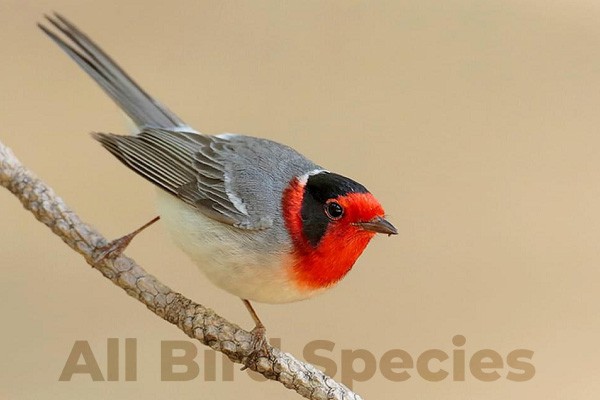
Breeding Grounds
The Red-faced Warbler likes mountains in the American southwest and northern Mexico. They live between 6,000 and 10,000 feet high. For nests, they lay 3 to 4 creamy or white eggs with reddish-brown spots.
Western Kingbird (Tyrannus verticalis)
The Western Kingbird stands out with its sleek look and hidden crown patch. This red patch pops up when the bird is excited. These big flycatchers are fierce defenders of their space. They will even scare off birds much larger than themselves. Birdwatchers often hear their sharp call note before spotting them in the wild lands of western North America.
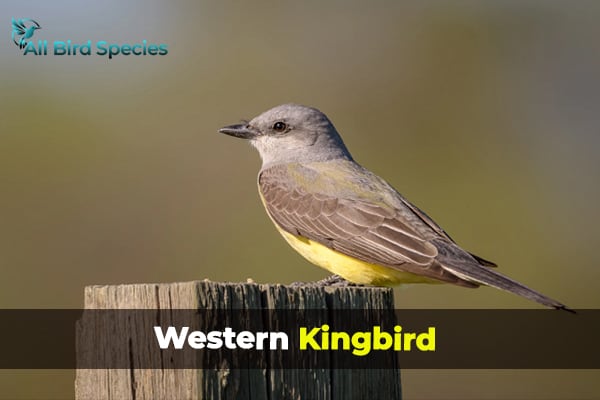
Territorial Displays
Western Kingbirds make sure everyone knows their territory is off-limits. They scold and chase off enemies and other kingbirds. This bold act is their secret to keeping their nests and food areas safe. Such aggressive guarding helps them stay on top.
Don’t underestimate these small birds. Their hidden red crown adds to their commanding look when they get ruffled. Combined with their strong will to defend their home, they are a striking figure in the wilderness.
Pileated Woodpecker (Dryocopus pileatus)
The pileated woodpecker is one of North America’s largest species. It’s easy to spot with its bold red crest atop its gray body. These birds are known for their special way of finding food and the loud drumming sounds they make.
The Largest Woodpecker
This woodpecker is nearly as big as a crow, with an average weight of 277 grams. The males weigh about 300 grams, while females weigh around 256 grams. That’s quite a noticeable difference in size between them.
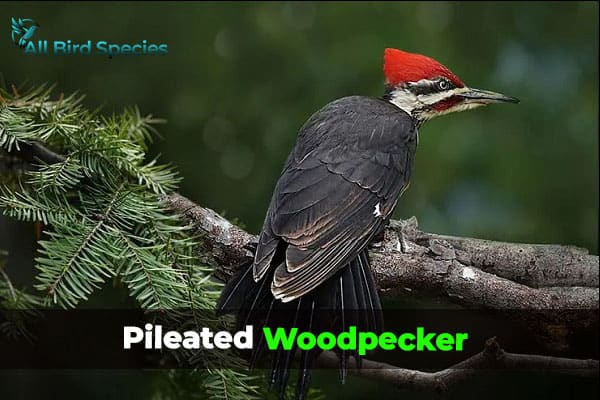
Drumming Behavior
The pileated woodpecker makes distinctive drumming sounds for communication and marking its territory. It’s great at finding carpenter ants by digging into dead wood. You’ll know they’ve been around by the rectangle holes they leave.
These woodpeckers love different types of forests, from evergreen to deciduous trees. They even live in the partly wooded areas of the suburbs in Eastern U.S. Their size, looks, and impressive drumming make them a wonder to see in nature.
Red-capped Manakin (Ceratopipra mentalis)
The male Red-capped Manakin is known for its striking ‘moonwalk’ dance. It has a bright red crown and black body. These birds live in the understory of tropical forests and are vital as seed dispersers.
Courtship Rituals
The male Red-capped Manakin’s courtship is a sight to see. It wears a bright red crown with a black body. It does a ‘moonwalk’ dance to find a mate. This dance shows off its agility and skills, making it impressive to others in its kind.
Ecological Role
The Red-capped Manakins are not just beautiful; they’re also important. They eat fruits and berries, spreading seeds. This helps many plant species grow in their home. They show how important every creature is in keeping their ecosystem healthy.
Red-bellied Woodpecker (Melanerpes carolinus)
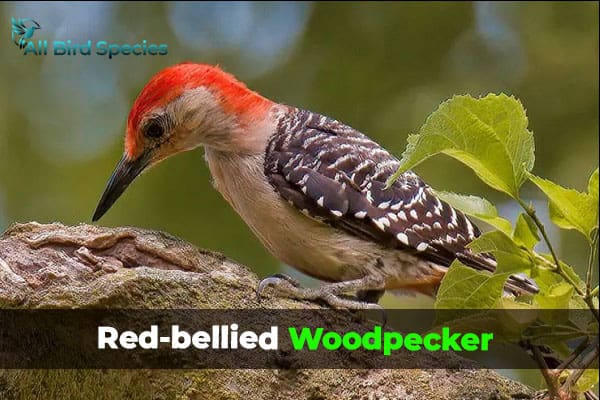
The red-bellied woodpecker gets its name from the red on its head, not the belly. These birds love to eat from backyard feeders or find food in trees. They are very adaptable, living in places like eastern woodlands and the suburbs. Because of this, many people enjoy seeing them while out bird watching.
| Characteristic | Measurement |
|---|---|
| Length | 22.85 to 26.7 cm (9.00 to 10.51 in) |
| Wingspan | 38 to 46 cm (15 to 18 in) |
| Weight | 2.0–3.2 oz (57–91 g) |
Misleading Name
Red-bellied woodpeckers stand out with their bright red head and neck. Their belly, however, is not red at all. This is a fun fact about them.
Adaptability and Range
These birds are very adaptable. They can live in eastern woodlands and also near people in the suburbs. This is why you can find them all over the eastern U.S.
Check Our Previous Articles:
Appreciating and Preserving Avian Diversity
Gray birds with red heads are truly captivating. But these birds face big challenges like losing their homes, a changing climate, and human actions. As bird lovers and nature fans, it’s up to us to stand up for these birds and protect their homes. This way, our kids and grandkids can enjoy their beauty too.
In the Hudson Valley, places like the Esopus Meadows Preserve are vital for birds all year round or during migration. These areas have different environments that bring in many bird species. For example, you can find the red-headed woodpecker, cedar waxwings, and Eastern kingbirds there. Working to keep these places safe helps keep birds’ habitats intact.
There’s also the Forestry for the Birds program in Indiana. It’s working hard to fight the drop in bird numbers. The program wants to create forests that fit different bird needs, especially those in danger. By appreciating the unique charm of gray birds with red heads, we must remember our part in looking after the areas they live in. Let’s make sure they have a healthy space for future generations to enjoy.

